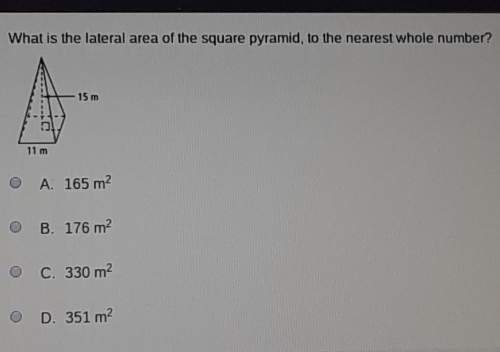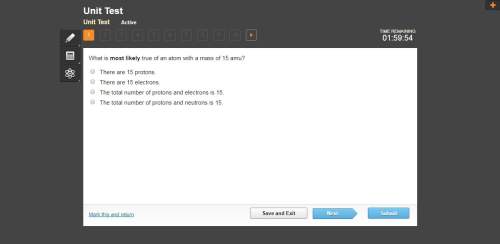
Mathematics, 20.11.2021 01:00 aidengalvin20
The vertices of ΔABC are A (1, 5), B (3, 9), and C (5, 3). The vertices of ΔDEF are D (−3, 3), E (−2, 5), and F (−1, 2). Which conclusion is true about the triangles?
A. The ratio of their corresponding sides is 1:3.
B. They are congruent by the definition of congruence in terms of rigid motions.
C. The ratio of their corresponding angles is 1:3.
D. They are similar by the definition of similarity in terms of a dilation.

Answers: 3


Other questions on the subject: Mathematics

Mathematics, 21.06.2019 15:30, 001234567891011
Abike shop sells you a bicycle for $63 and a helmet for $21. the total cost is 150% of what the shop spent originally. how much did the shop spend originally? how much profit did the bike shop earn by selling the bicycle and helmet to you ?
Answers: 1

Mathematics, 21.06.2019 19:30, indiaseel2744
Suppose i pick a jelly bean at random from a box containing one red and eleven blue ones. i record the color and put the jelly bean back in the box. if i do this three times, what is the probability of getting a blue jelly bean each time? (round your answer to three decimal places.)
Answers: 1

Mathematics, 21.06.2019 20:10, morgantisch25
A. use the formula for continuous compounding with the original example: $1000 invested at 2% for 1 year. record the amount to 5 decimal places. use a calculator. b. compare it to the result using the original compound interest formula with n = 365 calculated to 5 decimal places. which has a larger value? explain.
Answers: 1

Mathematics, 21.06.2019 22:30, izabelllreyes
Gabrielle's age is two times mikhail's age. the sum of their ages is 84. what is mikhail's age?
Answers: 2
You know the right answer?
The vertices of ΔABC are A (1, 5), B (3, 9), and C (5, 3). The vertices of ΔDEF are D (−3, 3), E (−2...
Questions in other subjects:

Mathematics, 27.01.2020 21:31

Mathematics, 27.01.2020 21:31


Mathematics, 27.01.2020 21:31

Social Studies, 27.01.2020 21:31

Biology, 27.01.2020 21:31


History, 27.01.2020 21:31

Physics, 27.01.2020 21:31

Biology, 27.01.2020 21:31





